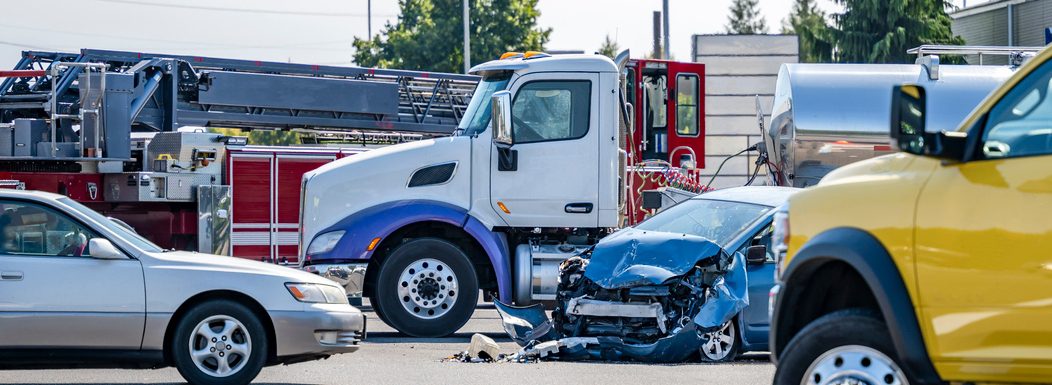A Step Toward Roadway Safety: Large Truck & Bus Crashes on the Decline

Take a look at the latest bus crash and large truck accident data from the FMCSA, and see how MVR report checks can help decrease these instances.
The Federal Motor Carrier Safety Administration (FMCSA) has released its annual Large Truck and Bus Crash Facts report with data for the year 2020. "Large trucks" are defined as any truck with a gross vehicle weight rating (GVWR) above 10,000 pounds.
The report details crash trends, what factors contribute to the crashes, and what can be done to reduce the risk of crashes. A promising trend from the report? Truck and bus crashes are down as of the year 2020.
Bus Crash Frequencies & Types
Some of the FMCSA’s statistics relating to buses showed reductions in fatal bus crashes:
- The number of buses involved in fatal crashes declined from 235 to 156.
- There were 46 school buses, 9 intercity buses, and 86 transit buses involved in fatal crashes in 2020, all of which were among the lowest numbers recorded since the Fatality Analysis Reporting System (FARS) began in 1975.
Large Truck Crashes Follow Suit
Mirroring the decrease in bus crash instances, the number of commercial truck crashes also reduced from 2019 to 2020. Below are some of the most prominent FMCSA stats showing this trend:
- The number of large trucks involved in fatal crashes decreased by four percent, from 5,033 to 4,842
- The number of large trucks involved in injury crashes decreased by 10 percent, from 119,000 to 107,000.
- The number of large trucks involved in property damage-only crashes decreased by 21 percent, from 414,000 to 327,000.
The Role of MVR Report Checks in Reducing Crashes
Whether these decreases are a result of careful driver behavior, better driver training, increased roadway safety awareness events, or a combination - they should encourage all commercial vehicle drivers to follow suit.
One of the best ways Safety Managers can ensure their fleets are operating safely is through a motor vehicle report (MVR) monitoring program. It's easy to pinpoint any repeat offenders of unsafe driving behaviors since the software detects and notifies you of any citations added to your drivers' MVRs.
Driver Impairment Continues to Pose Problems
In 2020, six percent of the large truck drivers in fatal crashes tested positive for at least one drug, although 57 percent of them were not tested. This percentage matches the result from 2019. “Impairment (Fatigue, Alcohol, Illness, etc.)” was also the second most common driver-related factor in these crashes.
Having a DOT-compliant drug and alcohol testing program in place can help your fleet avoid becoming a part of these statistics. Foley offers pre-employment drug testing to build safer, more reliable teams; random drug and alcohol testing for DOT compliance; post-accident drug and alcohol testing in the event a crash does occur; and other testing types based on your driver's specific situation.
Keep up with the Crash Decline Trend with DOT Compliance Services
To keep large truck and bus crash occurrences on a downward spiral, companies like yours should have a continuous MVR monitoring program (like Foley’s!) in place to keep track of driver habits or violations that may come up.
Our software platform works 24/7 and lets you know when any employee is caught speeding; issued a DWI; has a license suspension, revocation, or expiration; or there’s an issue with their DOT medical card.
Tracking your drivers’ safety practices and performance is crucial to reducing the number of crashes they’re involved in, which is hopefully zero. Foley is here to act as your partner in mastering DOT compliance and keeping your fleet and other drivers on the road as safe as possible.
Get a free demo of our DOT compliance software and start making a difference in the safety of your drivers and our roadways.
Related Articles
Large Truck Fatalities are on the Rise
The Growing Problem of Synthetic Cannabinoids
FMCSA Regulatory Update: Crash Preventability Determination Program
.png)


